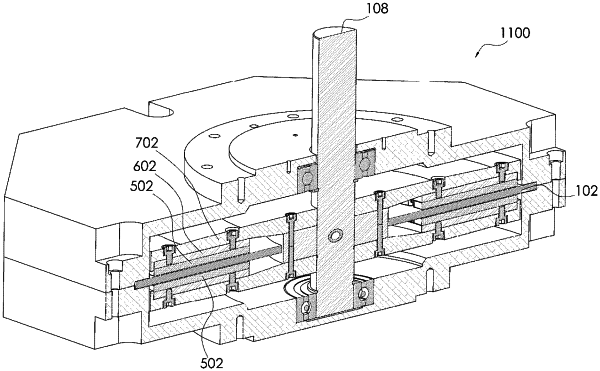| CPC H02K 1/2798 (2022.01) [H02K 1/2733 (2013.01); H02K 15/03 (2013.01); H02K 16/02 (2013.01)] | 28 Claims |

|
1. A rotor assembly for an axial flux machine, comprising:
at least one magnet;
a first support structure having a first annular surface on a first side and a second annular surface on a second side opposite the first side, wherein the at least one magnet is attached to the first annular surface such that the first support structure provides a flux return path for the at least one magnet; and
a second support structure configured to be attached to the second annular surface of the first support structure so as to allow torque to be transferred between the at least one magnet and the second support structure via the first support structure, wherein:
the second support structure is further configured (A) to be attached to a rotatable shaft of the axial flux machine, or (B) to function as an output or input flange of the axial flux machine,
the second support structure is adapted to rotate about an axis of rotation of the axial flux machine,
the at least one magnet has a first magnet surface that is orthogonal to a magnetization direction of the at least one magnet and faces away from the first annular surface of the first support structure,
the second support structure is further configured such that, when the second support structure is attached to the second annular surface of the first support structure and the rotor assembly is not influenced by any other magnetic components, the first annular surface is warped so that a distance between a first plane that intercepts a first point on the first magnet surface and to which the axis of rotation is normal and a second plane that intercepts a second point on the first magnet surface and to which the axis of rotation is normal is substantially greater than zero, and
the first support structure is further configured such that, when the second support structure is detached from the second annular surface of the first support structure, the first annular surface has a substantially flat configuration.
|